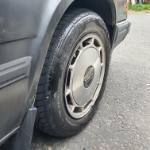-
Similar Content
-
Ongoing P4 rectifications - ignition 1 2 3 4
By jonathan_dyane,
- 108 replies
- 8,549 views
-
- 141 replies
- 12,654 views
-
- 3,130 replies
- 334,052 views
-
- 427 replies
- 38,098 views
-
invacar LightBulbFun's Invacar & general ramble thread, index on page 1, survivors lists on Pages 24/134 & AdgeCutler's Invacar Mk12 Restoration from Page 186 onwards, still harping on... 1 2 3 4 500
By LightBulbFun,
- 14,974 replies
- 1,397,349 views
-







Recommended Posts
Create an account or sign in to comment
You need to be a member in order to leave a comment
Create an account
Sign up for a new account in our community. It's easy!
Register a new accountSign in
Already have an account? Sign in here.
Sign In Now